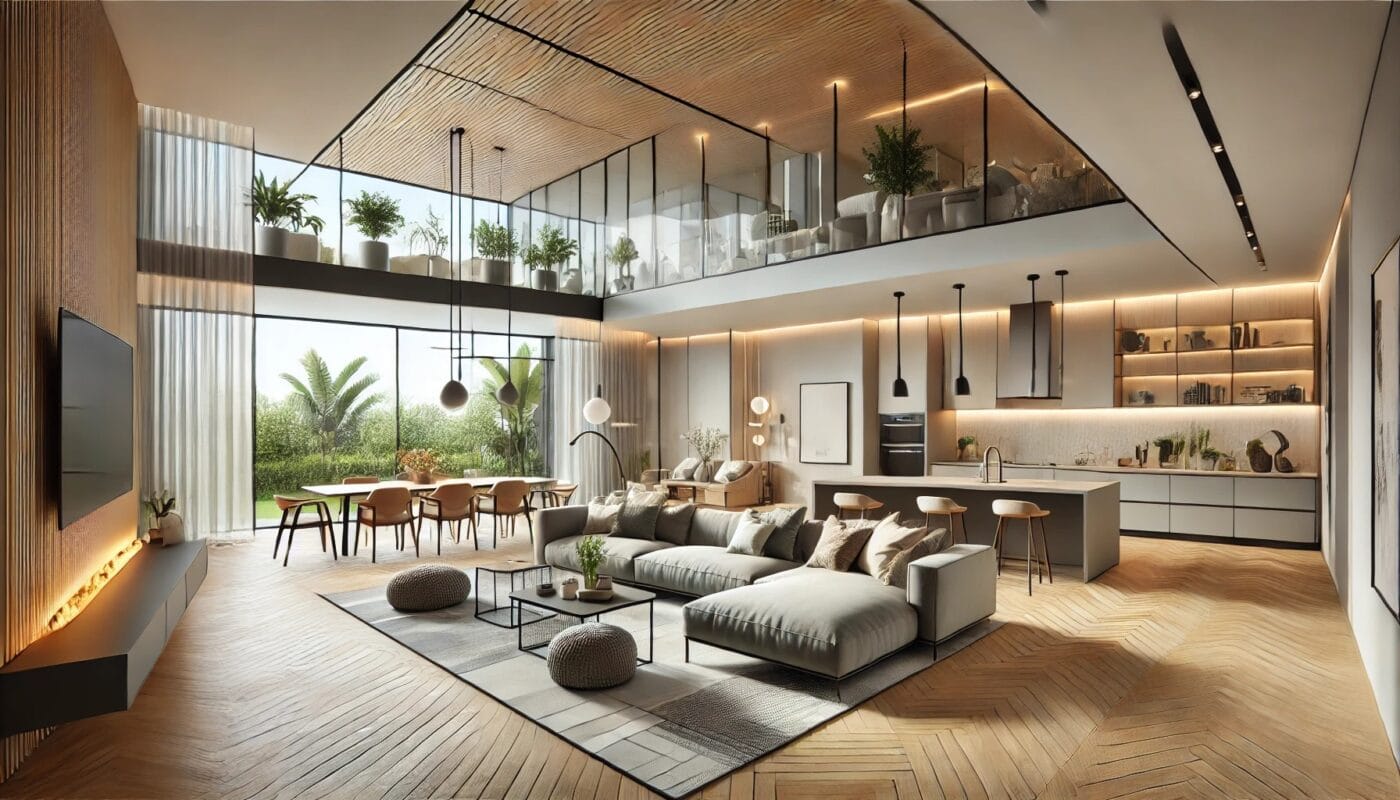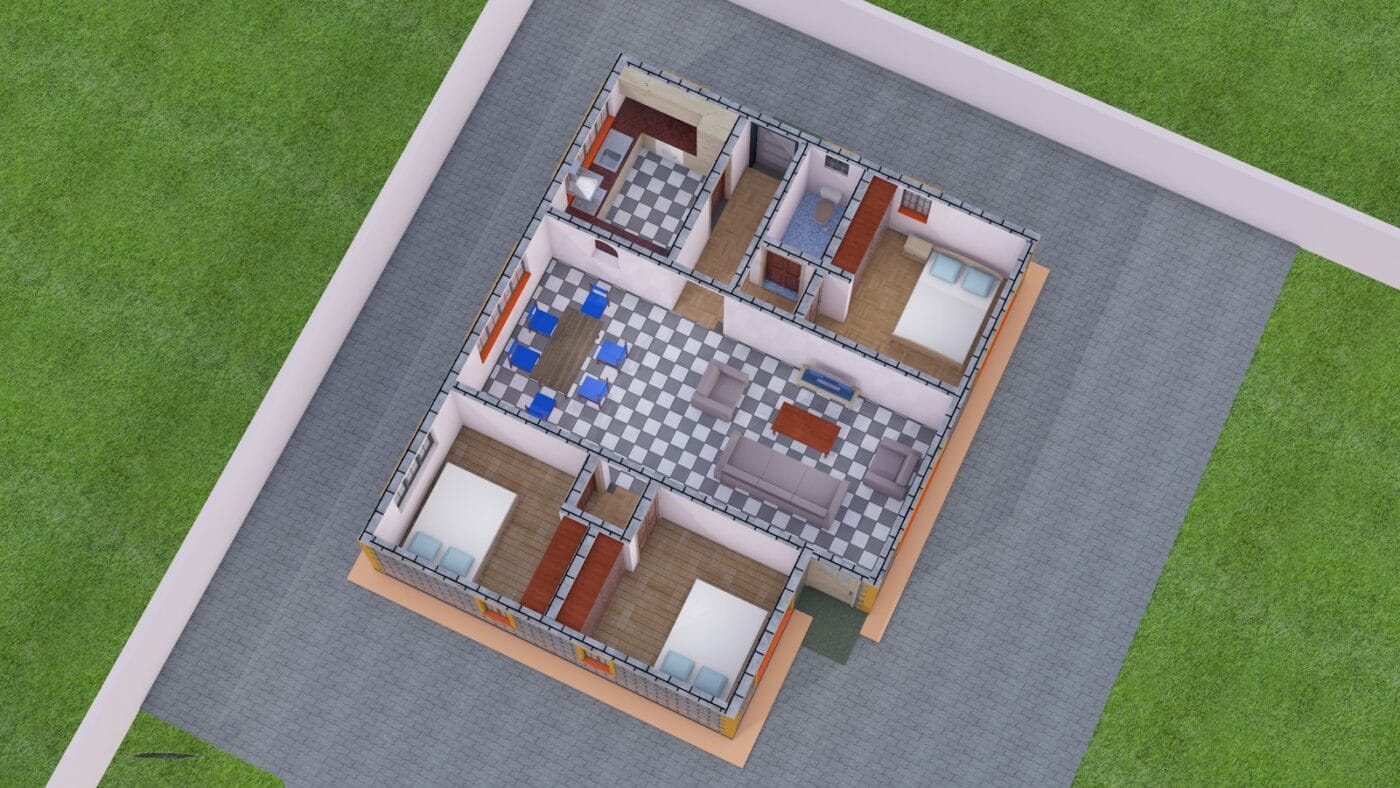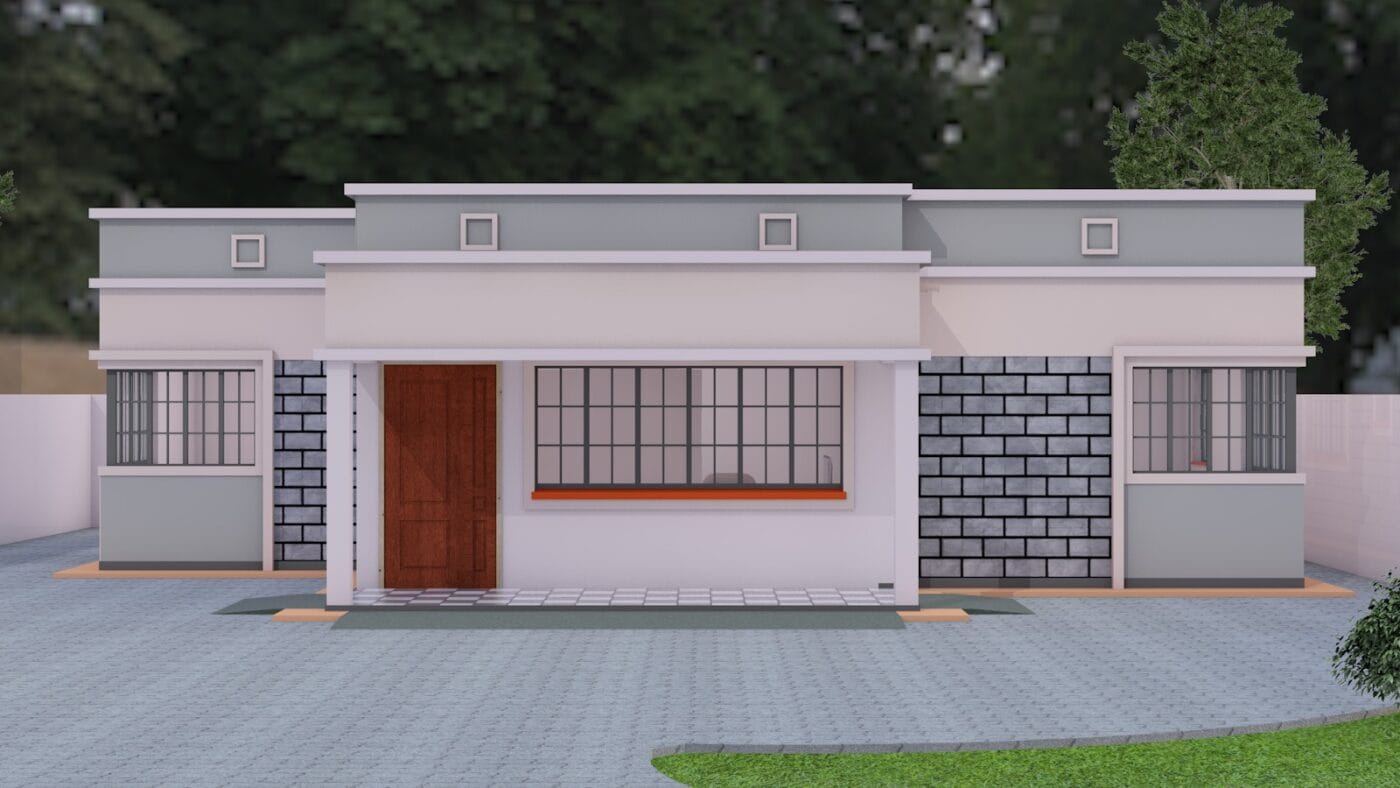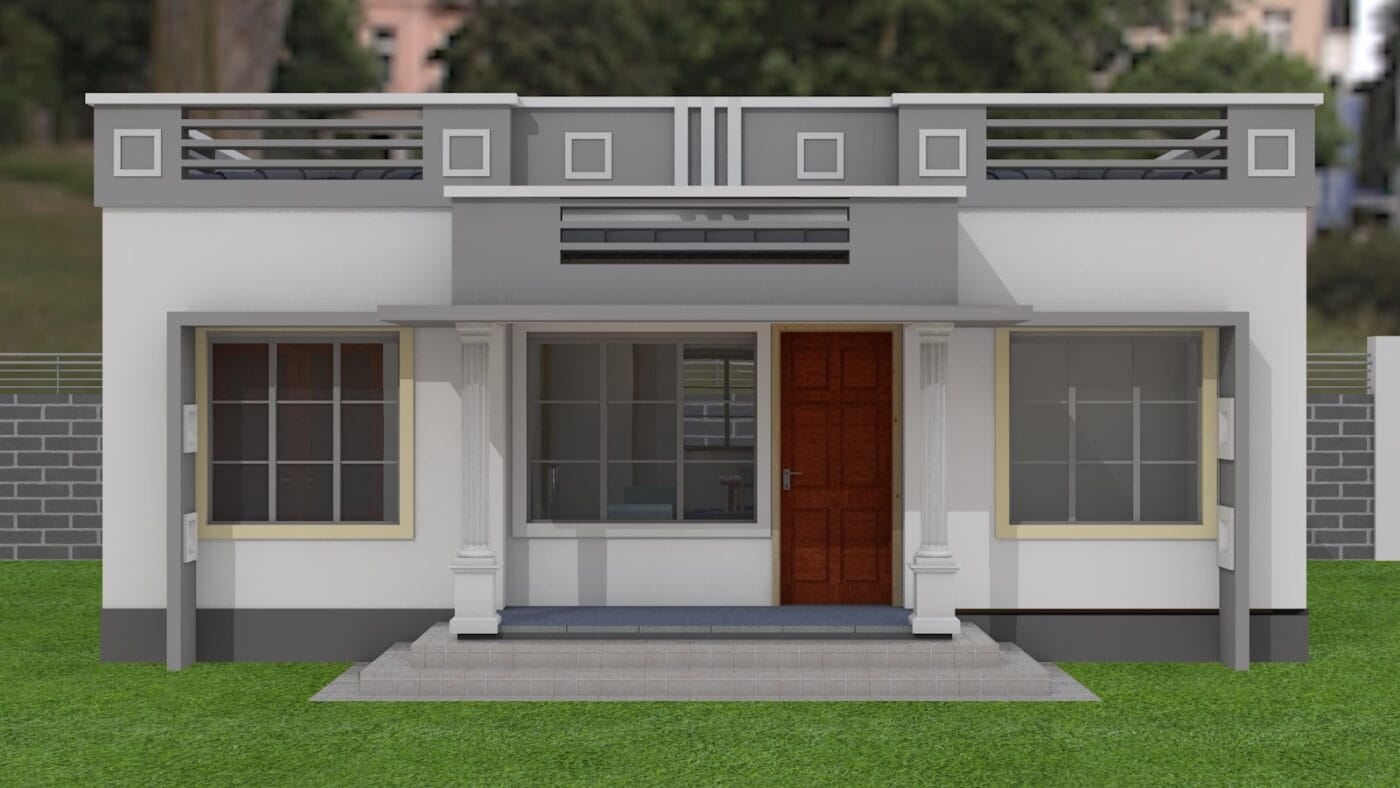House Plans
Best House Plans for Narrow Lots and Small Spaces
The best house plans for narrow lots and small spaces prove that living in a small home doesn’t mean compromising on style, comfort, or functionality. With the right house plans tailored for narrow lots and small spaces, you can create a cozy and efficient living environment. Here, we explore the best small home design plans that are perfect for modern living.
Why Choose a Small Home Design: House Plans for Narrow Lots?
Opting for a small home design isn’t just a matter of downsizing—it’s about embracing a more efficient, sustainable, and lifestyle-conscious way of living. In today’s world, small homes are becoming increasingly popular for various reasons, ranging from financial savings to environmental concerns. Let’s delve into why choosing a small home design can be a game-changer for many homeowners.
1. Cost Savings
One of the most significant advantages of choosing a small home design is the cost efficiency. Smaller homes are typically more affordable to build and maintain. From construction materials to labor, smaller square footage means fewer costs. In addition, the operational costs of heating, cooling, and maintaining the home are significantly lower. Smaller homes often require less energy, which translates into reduced utility bills. The initial investment is lower, and the long-term savings in terms of energy costs, maintenance, and property taxes make small homes an appealing choice for many.
2. Smarter Use of Space
Small homes are designed to make the most of every square foot. By focusing on thoughtful design, you can create a home that feels spacious and comfortable despite its size. With open floor plans, multifunctional furniture, and smart storage solutions, small homes can feel more expansive than they really are. Rather than wasting space, small homes encourage efficiency—ensuring every inch is used optimally. In a world where people are more mindful of how they use their resources, choosing a small home design allows homeowners to truly maximize their living spaces.
3. Eco-Friendly and Sustainable Living
Smaller homes have a smaller environmental footprint. They consume less energy for heating, cooling, and lighting, making them an excellent choice for eco-conscious homeowners. Many modern small homes integrate sustainable design features like energy-efficient windows, insulation, and renewable energy sources such as solar panels. Choosing a small home reduces your carbon footprint and promotes a minimalist lifestyle, encouraging the consumption of fewer resources, less waste, and more sustainable living practices. In addition, many small homes are built with eco-friendly materials and green building techniques, which further contribute to the sustainability of the home.
4. Low Maintenance
With fewer rooms and less square footage, small homes require less time and money for upkeep. There are fewer surfaces to clean, fewer repairs to make, and lower overall maintenance costs. This translates into less stress and more time to focus on other aspects of life. For those who prefer simplicity, a smaller home means less clutter, fewer possessions to manage, and an overall easier lifestyle. Additionally, small homes can be designed to require minimal landscaping, which reduces the time and effort spent on yard work.
5. Encourages a Simplified Lifestyle
Living in a small home can encourage a more minimalist approach to life. Without the luxury of unlimited space, homeowners are forced to prioritize what truly matters. This can lead to a reduction in material possessions, fostering a simpler, more intentional lifestyle. Smaller spaces also promote better organization, as there is less room for clutter. Many people who choose small homes find that they are able to focus on experiences and relationships rather than accumulating things. A smaller living space can lead to greater emotional well-being, as it encourages people to focus on what brings them true happiness.
6. Greater Flexibility in Design
Small home designs often offer more flexibility in terms of customization and layout. With fewer walls and divisions, homeowners can tailor their living spaces to fit their specific needs. Whether you need a home office, a guest room, or a creative space, a small home can be designed with your lifestyle in mind. Many small house plans feature multifunctional spaces that adapt as your needs evolve. This adaptability makes small homes particularly appealing to those who want a living space that can change with their lifestyle, family size, or personal preferences.
7. Urban Accessibility
In urban areas, land is often scarce and expensive. Small homes are an ideal solution for city living, where narrow lots and compact spaces are the norm. Narrow lot house plans make the most of available land and can fit seamlessly into dense neighborhoods or urban environments. Building a small home allows homeowners to live closer to city centers and access the conveniences of urban life—such as public transportation, restaurants, and cultural amenities—while minimizing the need for a large property. This makes small homes a practical choice for those who want to live in prime locations without the burden of maintaining a large home.
8. Enhanced Creativity and Innovation
Designing a small home challenges architects and homeowners to think outside the box. It encourages creative problem-solving and innovation, especially when it comes to optimizing storage, creating multifunctional spaces, and incorporating design elements that maximize light and air. From custom-built furniture to space-saving storage solutions, small homes often push the boundaries of traditional design, leading to more innovative and unique living spaces. The need to make the most of every inch of space results in clever, efficient, and aesthetically pleasing design choices.
9. Future-Proofing Your Home
Small home designs often incorporate flexible layouts that can adapt to changing needs over time. Whether you’re expecting a growing family, working from home, or transitioning to retirement, small homes offer the flexibility to adjust. Spaces can be reconfigured with minimal effort, and features like convertible furniture and modular designs make it easier to adapt the home to meet your evolving lifestyle. Small homes are built for longevity, allowing homeowners to customize their space to their needs without extensive renovations.
Features of a Great Small House Plan
- Open Floor Layouts Open floor plans create a sense of spaciousness. Combining the living, dining, and kitchen areas can make a small home feel larger. Open concept narrow house plans are particularly effective for creating flow in smaller spaces. Additionally, these layouts enhance flexibility, allowing homeowners to adapt their interiors to different needs over time.

- Multifunctional Spaces Rooms that serve multiple purposes—like a home office doubling as a guest room—maximize usability. Including foldable or convertible furniture can further enhance the versatility of these spaces, ensuring every square foot serves a purpose.

- Smart Storage Solutions Built-in shelves, under-stair storage, and cleverly concealed cabinets can keep clutter at bay. For narrow or long homes, vertical storage solutions such as floor-to-ceiling cabinets and wall-mounted shelves can save space while maintaining a tidy appearance.
- Natural Light and Ventilation Large windows and strategic positioning can make any small space feel bright and airy. Skylights and glass doors can also bring in additional light, making narrow lot house plans single story or multi-level feel more open.
Thoughtfully designed narrow lot house plans are masters of making the most of every square foot. Whether you’re working with a compact urban lot or simply want a more affordable, space-conscious home, these layouts transform space limitations into stylish opportunities. Clever use of windows not only invites natural light but can also provide beautiful views and a sense of connection to the outdoors, even in a densely built neighborhood.
Some narrow home designs incorporate glass doors that lead directly to charming porches or cozy courtyards, further blurring the line between indoors and out. Multi-story layouts with well-placed windows or light wells can brighten interiors from top to bottom, ensuring every area feels inviting. By embracing innovative architectural features and smart placement of light sources, narrow house plans “live” just like any other quality home—sometimes even better, thanks to their creative solutions for modern living. - Efficient Outdoor Integration Small house plans often include outdoor spaces like patios, balconies, or courtyards. Narrow house plans with garages can incorporate rooftop gardens or side-yard patios to make the most of limited space.
- Energy Efficiency Great small house plans focus on sustainability. Incorporating energy-efficient appliances, proper insulation, and renewable energy solutions such as solar panels can reduce long-term costs and environmental impact.
Small Home Design Plans to Consider
- Small Modern House Floor Plan
Modern small house design plans emphasize simplicity and functionality. Consider a one-bedroom layout with an open living area and a compact kitchen. Add sliding glass doors to extend the living space to a patio. These plans often integrate minimalist aesthetics with practical features like energy-efficient windows and space-saving storage.
Popular Options:
- Narrow Modern Plans
- Small Narrow 2 Story Plans
- Contemporary Small House Plans
For those who love sleek and minimalist designs, contemporary small house plans feature clean lines and bold geometric shapes. Think of floor-to-ceiling windows, a small loft, and an efficient galley kitchen. Many of these plans incorporate open shelving and multipurpose areas to enhance usability without clutter.
Ideas to Explore:
- Narrow Lot Modern Farmhouses
- Narrow Lot Modern Plans
- Narrow Lot House Plans Single Story
Single-story narrow lot house plans are perfect for maximizing space on a tight plot. These designs often feature an open concept layout with bedrooms positioned for privacy and a cozy outdoor patio. Adding creative landscaping elements can enhance the curb appeal of these compact homes.
Related Plan Types:
- Narrow 1 Story Plans
- 20 Ft. Wide, 30 Ft. Wide, and 40 Ft. Wide options
- Long Narrow House Plans
Long narrow house plans make the most of elongated lots. A layout with rooms arranged in a linear fashion ensures every corner of the space is functional. Including a garage or a utility area can add convenience. These plans often prioritize efficient corridor designs to maintain smooth flow throughout the house.
Variations:
- Narrow Open-Concept
- Narrow Lot Rear Garage
- Narrow House Plans 3 Bedroom
For families, narrow house plans with three bedrooms offer a balanced solution. These plans often include a master suite, two smaller bedrooms, and shared living areas optimized for both privacy and togetherness. Incorporating shared outdoor spaces like a small deck or garden can enhance the living experience.
Popular Layouts and Features
- Square Footage: Most three-bedroom narrow house plans range from about 1,200 to 2,000 square feet, making them manageable for growing families without feeling cramped.
- Stories: Both single-story and two-story options are common, allowing flexibility for different lifestyles and lot sizes.
- Smart Use of Space: Expect thoughtful layouts where open-concept living areas flow seamlessly into kitchens and dining nooks, maximizing every inch.
- Outdoor Appeal: Even on a narrow lot, these designs often provide a patio, compact yard, or balcony—perfect for morning coffee or evening relaxation.
- Bedroom Arrangement: Typically, the master suite is set apart from the two additional bedrooms, providing a quiet retreat, while the other rooms can function as kids’ bedrooms, guest rooms, or home offices.
Example Floor Plan Highlights
- 1,250 sq ft 1 Story 3 Bed, 2 Bath, 30′ Wide: Ideal for smaller lots, this plan offers an open living/dining area and a private master suite at the rear.
- 1,815 sq ft 1 Story 3 Bed, 2 Bath, 40′ Wide: Expansive windows and a split-bedroom layout promote both privacy and natural light.
- 1,835 sq ft 2 Story 3 Bed, 2 Bath, 34′ Wide: An efficient footprint with bedrooms upstairs, leaving the ground floor open for entertaining and family gatherings.
Whether you’re seeking a cozy one-story or a compact two-story, three-bedroom narrow house plans blend comfort, functionality, and style—making them a favorite for modern families and urban infill lots alike.
Helpful Categories:
- Narrow Lot Duplex Plans
- Narrow Luxury
- Small Home Design Floor Plans
Compact designs that integrate essential rooms without excess space are ideal for small homes. A floor plan for a small apartment can inspire a house design, such as a studio-style home with a convertible sofa bed. These plans can be customized with sliding partitions or modular furniture to create flexible living zones.
Also Consider:
- Narrow Lot Lake House Floor Plans
- Narrow Beach Plans
- Narrow House Plans with Garage
- Narrow House Plans with Garage
Including a garage in a narrow house plan adds functionality without sacrificing aesthetics. These plans often incorporate the garage at the front or side of the house, maintaining a sleek and modern look. Some designs even feature rooftop terraces above the garage to maximize outdoor living areas.
Narrow lot house plans are ideal for building in a crowded city or on a smaller lot just about anywhere. Architects and designers turn the restrictions of a narrow lot (and sometimes compact square footage) into architectural advantages by using creative layouts and space-saving solutions. Some plans feature back-loading garages with charming porches in front, while others stick to traditional front garages. There are even options without a garage at all, perfect for those who prioritize other features or rely on street parking.
No matter the configuration, narrow lot house plans with or without a garage are designed to make the most of every square foot—ensuring style, comfort, and practicality go hand in hand.
Popular Types:
- Narrow Front Garage Plans
- Narrow Lot Rear Garage
With so many specialized options—ranging from lake house escapes to duplexes, from open-concept layouts to luxurious compact living—it’s easier than ever to find a small or narrow home plan that fits your needs, your lot, and your lifestyle.
Related Narrow Lot House Plan Collections
Choosing the right narrow lot house plan is all about tailoring options to suit your needs—and the shape of your property. If you’re exploring more ideas, here are some popular categories and variations to consider:
- By Lot Width: Whether your lot is 20, 30, or 40 feet wide, there are tailored plans that maximize every inch. These collections are great for urban infill or compact neighborhood lots.
- By Garage Placement: Need a front-entry garage for quick street access, or prefer a rear garage for a cleaner façade? There are designs to fit both preferences, including options with rooftop terraces above the garage for extra outdoor living.
- By Number of Stories: Narrow single-story homes are great for accessibility, while two-story and even split-level options give you more living space without a bigger footprint.
- By Lifestyle: From beachside getaways and lakeside cottages to modern farmhouses and luxury townhomes, these plans combine style with practicality—no matter your vision.
- By Functionality: Duplexes for multi-generational living, open-concept layouts for flexible entertaining, and modern minimalist options are all available in narrow configurations.
With so many approaches—from cozy open-concept homes to elegant multi-bedroom layouts—it’s easy to find a narrow lot plan that fits both your needs and your dreams.
Tips for Customizing Small Floor Plans for Houses
- Prioritize Your Needs: Start by identifying your must-haves. Do you need a home office, extra storage, or a dedicated outdoor area? Clarifying your requirements ensures that your floor plan aligns with your lifestyle.
- Go for Multipurpose Furniture: Select furniture that serves multiple purposes. Folding tables, Murphy beds, and modular sofas can adapt to your lifestyle, freeing up space when not in use.
- Use Smart Dividers: Open layouts are great for spaciousness, but smart dividers such as bookshelves or sliding panels can create privacy when needed without adding walls.
- Maximize Vertical Space: Take advantage of vertical storage options like tall cabinets, wall-mounted shelves, and hanging organizers. These solutions free up floor space while keeping essentials accessible.
- Choose Light Colors and Reflective Surfaces: Light-colored walls, furniture, and reflective surfaces like mirrors enhance the feeling of space. Go for neutral tones to create a cohesive and airy atmosphere.
- Incorporate Outdoor Living Areas: Extend your living space with outdoor areas like patios, balconies, or small gardens. Even a narrow lot can accommodate a cozy outdoor retreat that enhances the overall livability of your home.
- Focus on Lighting: Layered lighting using recessed lights, pendant lamps, and under-cabinet LEDs can create an inviting and functional ambiance. Don’t forget to maximize natural light by using large windows or skylights.
- Invest in Custom-Built Solutions: Custom-built furniture and storage solutions can make the most of every corner, especially in irregular spaces or narrow layouts.
- Think Ahead: Plan for future needs such as growing families or potential home office spaces. Flexible layouts and modular designs can accommodate changing circumstances.
Benefits of Small Modern House Plans
- Cost Efficiency Building and maintaining a smaller home is significantly more affordable. Small homes require fewer materials during construction and lower utility bills over time, making them a practical choice for budget-conscious homeowners.
- Eco-Friendliness Smaller homes typically have a smaller carbon footprint. They use less energy for heating, cooling, and lighting, and they encourage a minimalist lifestyle, reducing waste and consumption.
- Low Maintenance Less space means fewer areas to clean, repair, and maintain. This saves time and money, allowing homeowners to focus on enjoying their living environment.
- Enhanced Creativity Designing a small home encourages creativity and innovation. From space-saving furniture to multipurpose rooms, these homes inspire unique and customized solutions for efficient living.
- Customization Options With thoughtful planning, you can tailor every corner of your small home to suit your needs. Whether it’s built-in shelves, hidden storage, or convertible furniture, small homes offer endless possibilities for personalization.
- Urban Accessibility Small homes are often ideal for urban areas where land is limited and expensive. Narrow lot house plans can fit seamlessly into cityscapes, offering a modern and functional lifestyle in prime locations.
Conclusion
Small doesn’t mean less when it comes to home design. At Nyolenju Structures, we specialize in providing the best house plans for narrow lots and small spaces. Our designs combine functionality, aesthetics, and sustainability to create living spaces that maximize every square foot. Whether you need a modern small house plan, a narrow lot design, or a customized layout to suit your lifestyle, our expert team is here to help. Let us turn your vision into reality and redefine what it means to live comfortably in a small home. Contact us today to explore our range of tailored house plans and start your journey toward your dream home.





